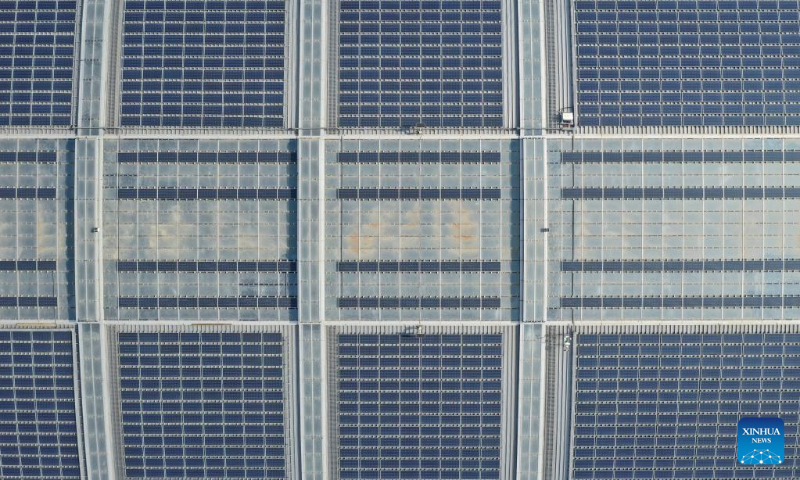
Aerial photo taken on Sept. 9, 2022 shows a distributed photovoltaic (PV) power station on the rooftop of the Xiong'an Railway Station in Xiong'an New Area, north China's Hebei Province. (Xinhua/Zhu Xudong)
China has achieved a new world efficiency record at 26.81 percent for silicon solar cells, according to the certification report of Institut für Solarenergieforschung in Hameln, Chinese solar giant LONGi Green Energy Technology Co said on Saturday.
The conversion efficiency of photovoltaic (PV) cells refers to the ability of cells to convert solar power into electric energy. The more electricity cells can generate from the same area while absorbing the same amount of light, the better.
In the face of soaring silicon material prices and rising industrial chain costs, experts believe that improving battery efficiency is crucial for cost reduction.
"This is the first time in the history of the PV industry that a Chinese solar technology company has set the world record for silicon solar cell efficiency," Martin Green, a professor at the University of New South Wales in Australia, who is known as the "Father of PVs," said on Saturday, according to an announcement sent to the Global Times.
A Japanese company set the previous PV efficiency record at 26.7 percent in 2017.
"Solar cell efficiency is the beacon of PV technology innovation. Every 0.01-percent improvement in solar cell conversion efficiency requires enormous efforts. In particular, crystalline silicon solar cells account for nearly 95 percent of the current PV market, so the ultimate efficiency of crystalline silicon solar cells also shows the development potential and direction of the PV industry," said Li Zhenguo, founder and president of LONGi.
Xu Xixiang, vice president of LONGi Central R&D Institute, said that breaking the world record was a milestone for China's PV industry, which fully demonstrated the scientific and technological strength of China's PV enterprises in silicon solar cell manufacturing and strongly boosted China's confidence and determination to become a major player in the world in more scientific and technological fields.
There is a global consensus in favor of peak carbon and carbon neutrality. Developing the PV sector is widely acknowledged as one of the primary methods for reducing carbon emissions.
China, as a firm supporter of the dual carbon commitment, has actively promoted the development of the domestic PV sector. According to the National Energy Administration, as of the end of September, China's installed renewable energy generation capacity reached 1.14 billion kilowatt-hours (kWh), with 358 million kWh of solar power.
The administration noted that the first and second batches of large wind power and solar bases have started, and the NEA is reviewing the third batch.
Global Times




